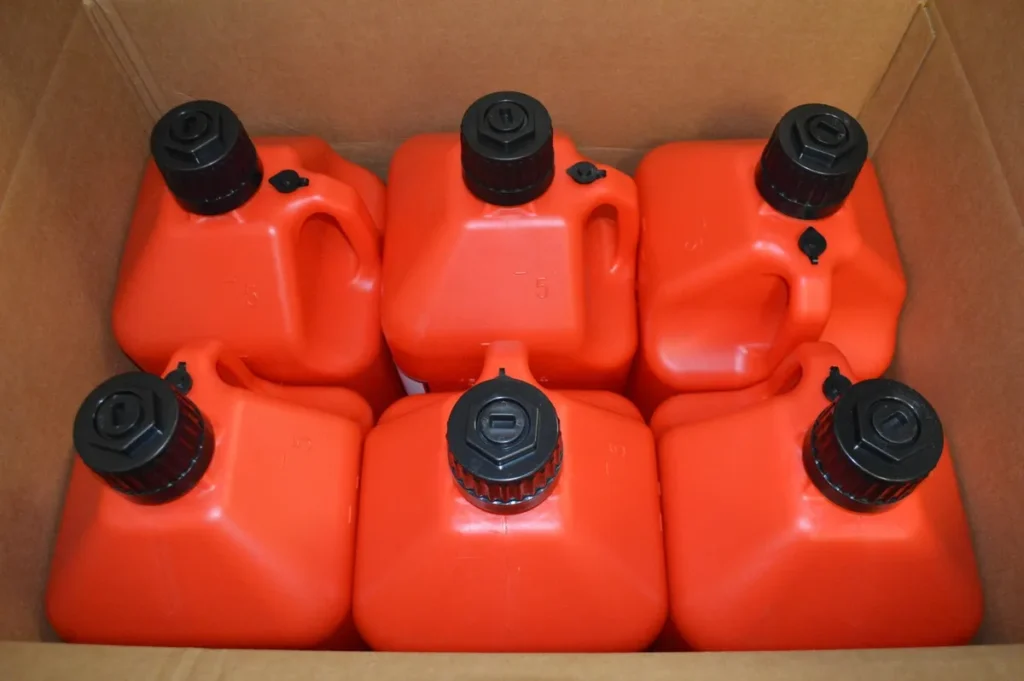Don’t Get Caught Powerless: How to Store Fuel for Standby Generators

September 28. 2023
Having a standby generator provides great peace of mind in keeping your home powered during an outage. But for your generator to work when you need it most, it’s crucial to properly maintain and store fuel. Stored gasoline can go bad in as little as 30 days. Improperly stored fuel can gum up the carburetor, clog fuel lines, and cause poor engine performance or even permanent damage. This article provides tips on how to safely store fuel for your standby generator.
1. Use Fuel Stabilizers
One of the easiest ways to extend the life of stored gasoline is to use a fuel stabilizer. These chemical additives help gasoline maintain its quality and combustion properties for longer periods. When added to gasoline, stabilizers provide oxidation resistance, moisture control, and corrosion protection. Leading brands of fuel stabilizers include Sta-Bil, Star Tron, and Briggs & Stratton. Always add the stabilizer according to the package directions before storing fuel. The stabilizer will help keep your gasoline fresh for up to 2 years when stored properly.
2. Choose the Right Fuel Storage Container
While it may be tempting to use a milk jug or laundry detergent bottle, it’s important to store generator fuel in an approved portable container. Look for one made from durable HDPE plastic with vents for safety. The container should have a childproof spout to prevent spills and leaks. Make sure it has a tight sealing cap. Only store fuels like gasoline, diesel, kerosene, and oil in the container, and label it clearly. Never fill the container all the way to allow for expansion. Fill it only 95% full. Also take care not to store your fuel containers near heat sources, direct sunlight, or sparks.
3. Use Proper Fuel Ratios
Consult your generator manual for the right gasoline to oil fuel ratio. Mixing oil with gasoline helps provide much-needed lubrication for the generator’s engine and prevents premature wear. For most standby generators, the ideal fuel mixture is 50:1 gasoline to 2-cycle engine oil. To achieve this, add 3.2 ounces of 2-cycle oil for every gallon of gasoline. Then properly shake or stir the fuel mixture before filling the generator’s tank. Don’t forget to also add fuel stabilizer to this freshly mixed fuel for maximum shelf life.
4. Rotate Stored Fuel
When storing gasoline for your generator, be sure to use the “first in, first out” principle. In other words, when you obtain fresh gasoline, pour it into a clean, approved storage container. Then use the existing older gasoline in your generator. Avoid pouring new gasoline into a tank containing old gas, as this does not refresh old fuel. Keeping track of fuel age and properly rotating lets you use gasoline before it loses combustibility. A good rule of thumb is to replace stored gasoline every six months.
5. Keep Fuel Containers Sealed & Cool
It’s important to keep stored fuel containers properly sealed and in moderate temperatures. Ensure the container cap seals tightly to prevent fuel evaporation and leaks. Store fuel containers in a cool, dry place protected from sunlight and extreme temperature swings. Avoid storing fuel in hot garages or sheds, which can cause fuel to deteriorate faster. You can further protect fuel by wrapping the container in a blanket or storing it underground. Just make sure the container vents are clear.
6. Watch for Signs of Bad Fuel
Over time, improper fuel storage leads to “stale” gasoline that can damage generators. Signs of bad fuel include a yellow/brown color, dirty appearance, stratified layers in the container, and a rotten or chemically smell. Bad fuel may also feel sticky, while good fuel is smooth. If you’re uncertain if old gasoline is still ok, don’t risk it in your generator. Safely dispose of old gas and start fresh.
By properly storing your standby generator’s fuel using these tips, you’ll ensure your generator performs optimally when you need it during power outages. Taking steps to prevent stale fuel avoids costly repairs down the road.


